
Venereal Disease Treatment Menu: 1 2 3 4 5 6 7 8 9 10 11 12 13 14 Next>>
Venereal Diseases in the Golden Age of Piracy, Page 12
Treating VD During the GAoP: Second Stage (Confirmed Pox) - Cure By Sweating
Sea surgeon John Moyle pointed out that sweating could be used in combination with either purging or salivation to eradicate a Confirmed Pox, 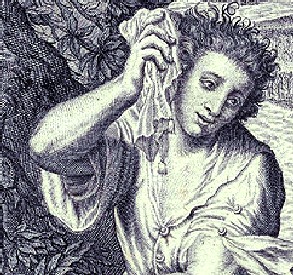
Artist: Peter Candid
Man Sweating, From Jahreszeiten Sommer (1699) detailing both methods in his books. His focus tends to lean towards the sweating/salivation combination. Fellow sea surgeon John Atkins chooses to present only sweating in combination with salivation and then doesn't provide much detail on the procedure. Sea surgeon John Woodall doesn't present any cohesive overall treatment of a Confirmed Pox in his books, providing only explanations of the medicines which could be used. (He discusses medicines which cause sweat (called sudorifics or diaphoretics) and various forms of mercury (used as salivatories) in conjunction with treating VD, so it would seem he may have also espoused the sweat/salivation route.) Moyle is the only sea surgeon under study to specifically present purging/sweating as a potential treatment option, although he and others do mentions using sweating with salivation.
English physician John Sintelaer was a proponent only of purging and sweating during the golden age of piracy. He felt that "Mercury ought to be banish'd (or at least Salivation) from the Cure of the Venereal Disease, because it not only most frequently ineffectual (unless în some slight Venereal Infections, and some few Bodies of extraordinary Strength) but also most generally, mischievous,
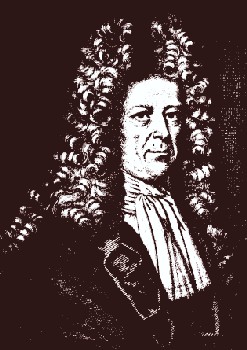
Johannes (John) Sintelaer (1709)
and tends to the utter Ruin of the Venereal Patient"1. When Sintelaer is not promoting and explaining sweating techniques, he is protesting the use of salivation and mercury. He gives an expansive and thorough explanation of the techniques and procedures.
Sintelaer even prefers sweating to the use of purging medicines in treating a Confirmed Pox, although he doesn't completely rule out their use like he does salivation. Sintelaer explains that
...the first and main Indication in the Cure of this Disease, being to purify and cleanse, the Blood of the Pocky Ferment, this Indication, I say must be answer'd chiefly by Sweating, to Expell the poisonous Humour thro’ the Pores of the Body, which, can't be so conveniently, nor so safely attain'd to by Purgatives nor Vomitives; not that I condemn the use of Purges in this Disease, but only the too frequent use of them, especially if they be very violent ones; for if they be gentle and taken with Moderation, they are so far from being noxious, that on the contrary they are absolutely necessary, to prepare and put in Motion the gross viscid and congealed Pocky Humours, and to carry of the grosser Part of them thro' the Intestines by Stool.2
1 John Sintelaer, The Scourge of Venus and Mercury, 1709, p. 162-3; 2 Sintelaer, p. 245
Sweating a Confirmed Pox - Medicines
Most of the medicines recommended by the surgeons under study are based on those discussed previously in the section on sudorifics, particularly forms of guaiac, antimony and sarsaparilla. The compound medicines discussed by period authors included other elements thought to be effective against the poisonous pox including purges, anti-venoms and sweeteners (to hide the taste of the sudorifics).
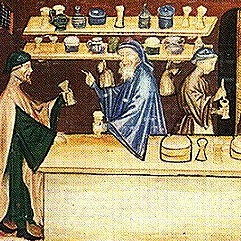
Preparing Treacle, Tacuinum Sanitatis (14th c.)
Sea surgeon John Moyle suggests several fairly simple sudorific medicines in his books. His first book recommends giving the patient a "dose of the aurum vitæ [a combination of gold and mercury], with Tintura Gumi Guiaci [guaiacum resin] two spoonfuls in a glass of Rhenish [wine]. So this unparalleld Medicine of it self, by continuing of it thus, will do your work without Fluxing."1 'Fluxing' is a generic word for flow, almost certainly referring to diarrhea in this case. Moyle is trying to get sweating (along with a certain amount of salivation) from the mercury without having the patient get diarrhea.
In his next book, Moyle provides two options. "Rx. Aq. Thriac. [treacle water] {1 ounce} Spir. Guic. [a distilled form of guaiacum resin] {2 drams} in Posset drink; f. Haustus [make into a haustus. Or, Rx. Thriac. Adrom. [Venice treacle] {1 dram} Antimo[nium]. Diaphor[etic]. {10 grains} misce, f. Bolus. [mix and make into a bolus]. Give either of these to the Patient, and put him to sweat"2.
English physician John Sintelaer provides a much more complex prescription for a sudorific medicine which he repeatedly refers to in his book as 'the Decoction'.

Photo: André Karwath - Common Polipodi Fern
Rec. Rasur. [rasped] Lign Guajac. [guaiac wood] {10} Ounces.
Sassafras {6} Ounces.
Rad[ix]. Chin[a]. [China root]
Sarsaparil[la].
Polypod[ium]. {Of each of these three ingredients, 3 ounces}
Rasur. [rasped] Corn[u]. Cerv[i]. [harts horn]
Ebor. [Ivory] {of both of these} 4 Ounces.
Sem. Anisi [aniseeds] 2 Drachms.
Antimon[y] gros mod. contus [kneaded and pounded] c ineptialigat. [loosely bound?] half a Pound.Infuse these Species for twice twenty four hours, in {16 or 18} Pounds of fair [spring] Water, and add to it about six or eight Ounces of white Tartar, after which, you must let it boil in a covered Pot or Vessel, to the Consumption of half the Quantity, afterward strain it and keep it for use: Of this Decoction let the Patient take four Ounces every Morning, and as many at Night, unto which, to augment its Sudorifique Virtue, you may add to each Dose every Day, about one Scruple Sal absynthii [salt of wormwood], Scordi[um], or Card[uus] Bened[ictus] [blessed thistle]. and continue it thus for fourteen Days, or three Weeks, according as you find there is occasion
Sintelaer's concoction has an astonishing variety of sudorific medicines in it including antimony, china roots, guaiac, sassafras, sarsaparilla, salt of wormwood and scordium. There are also some purging elements - polypodium, and harts horn - as well as a few medicines to resist poison including ivory and blessed thistle. He clearly didn't want to miss any opportunity to provoke a sweat.
1 John Moyle, Abstractum Chirurgæ Marinæ, 1686, p. 94; 2 John Moyle, Chirugius Marinus: Or, The Sea Chirurgeon, 1693, p. 144-5; 3 John Sintelaer, The Scourge of Venus and Mercury, 1709, p. 97-8
Sweating a Confirmed Pox - Procedure
Once the patient was given medicines that would cause them to sweat, the procedure moved on to the mechanics of sweating. A variety of methods were employed to encourage perspiration.
The patient was sometimes dressed in heavy, warm clothes
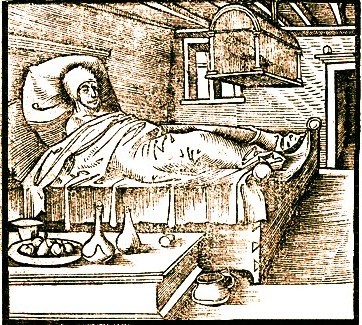
Sweating a VD Patient, Ulrich von Hutten in bed (16th century)
and/or put to bed under covers to help the patient to sweat more. Sea surgeon John Moyle orders "you must have ready Flannel Stockin[g]s, Drawers, Shirt and Wastcoat, as likewise Flannel Muffler and Cap, for the body must be kept exceeding warm"1. Moyle goes on to say that once the patient was dressed in al this, he "must be laid in Flannel Sheets, and covered well, the Room or Cabbin must be hung about with warm hangings, that no cold come in; and if there were a small pot or pan of Fire in the Cabbin, it were so much the better."2 Moyle elsewhere recommends in a purging/sweating situation that the patient should "have warm Clothes in his Bed to rub himself withal."3 The idea was that the friction created by rubbing would encourage sweating.
In his Memoirs, Moyle explained how he kept a patient being sweated and salivated warm. "I Clothed them, as the Legs with the Stockings, the Thighs and Hips with the Trousers, and so of the rest to keep warm. His shirt was Flanel, and a warm Napkin about this Neck fastened to his Cap, and about his Chaps before. And [dressed] so he was put in his warm Bed"4.
When purging and sweating a patient put to bed, John Sintelaer 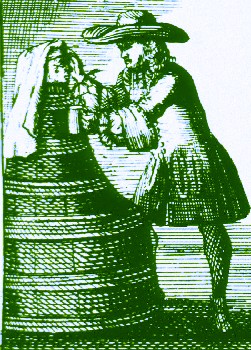
Sweating a Seated Patient, From De Spaanse
Pok-meeste, By David Abercromby (1691)
chooses a very different procedure from that used by Moyle. "The Patient is laid quite naked in a Bed, and over his Body are extended three or four half Hoops, in order to keep the Bed cloaths from touching his naked Body"5. In addition to using a bed, Sintelaer also talks about sweating a patient using a chair. Here, he advises, "Place your Patient upon a pretty high Chair stark naked, so that his Feet may rest upon something, and then cover him all round very close up to the Chin, and the Chair - also behind with warm Blankets."6 Future sea surgeon Johann Dietz mentions a similar procedure using a chair where "the patient had to sit stark naked". Once seated, Dietz explains, "I hung around him first his blanket, folded at least fourfold, and then his velvet-lined cloak, fastned by means of brooches."7
Once a patient is resting naked in such makeshift tents, both Sintelaer and Dietz burn rectified spirit of brandy inside of them. Sintelaer shows a little box with a tube on top in which the burning spirit is put so that the tube can force the warmed fumes directly into the space around the patient. (Seen below left.) Sintelaer opines, "the Method of Promoting the Sweat by the highest rectify'd Spirit of Wine, is certainly the best, because this Spirit by its oleagenous [oily] and most volatile Particles not only most powerfully penetrates thro’ the Pores, but also volatilizes the viscid slimy Part of the Venereal Poison, and expels it along with the Sweat out of the Body"8. When treating a patient in this manner, Sintelaer advises the reader to "supply it with fresh Spirit as often as it proves deficient, (but gradually for fear of doing
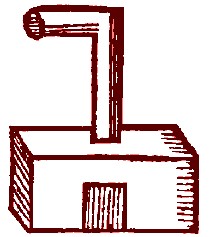
Sintelaer's Tin Stove for Heating Rectified
Spirit of
Wine (1709)
Mischief) and continue it so long as you think it necessary or convenient."9
Notably, neither of the chair-based nor Sintelaer's bed-with-hoops-based sweating were performed on ships. Although Sintelaer has much to say about the benefits of using burning rectified spirit of wine to heat the patient in their cocoon, it would have been a challenge to attempt to do on a ship. Wooden ships were extreme fire hazards with their canvas sails, oakum calk, tarred fabrics and wood construction. If those things weren't enough, the patient's coverings added to the problem, even on land. Dietz explains that in one case, his chair-seated patient "by shifting the chair to and fro he upset the little basin containing the burning spirit, or he overturned it with his feet; for the whole contrivance beneath him was a mass of flames; everything was burning; so that anyone might have seen the victim leaping and dancing about the room."10 Such a conflagration would have been doubly dangerous in the flammable world of a wooden ship.
We have already seen that Moyle used a cabin hung with "warm hangings". He tells his readers to "let the Room be very close and warm; (indeed if you were ashore a hot House were best.)"11 He elsewhere recommends that the surgeon "apply quart
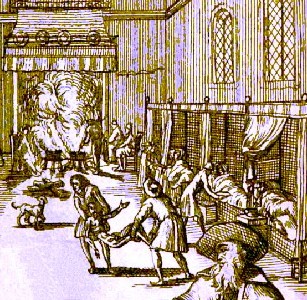
A 'Hot House' on Land From Der Spaanse Pok-Meeste,
By David Abercromby (1691)
bottles filled with hot water (and wrapt in Clothes) to his Feet, and at the Back and Head, so will he fall to sweating powerfully; but let him have warm Napkins in the bed with him to wipe himself, and have a care that he catch not cold afterward, but cool by degrees."12
Moyle suggests that the patient be made to sweat between and hour and ninety minutes at a time. "Let him have a dayes respite between, and then do the like again, and a third time… Then after a dayes respite fall to Purging again as before; letting him take but three times each other day; and then after a day between the sweat again twice; then observing the same space of time, purge once; and then after a day more sweat once."13 In his Memoirs, Moyle extended this time by giving the patient "warm Possit Ale, to put him in a Breathing Sweat, and having kept there about three Hours"14. He suggests using such procedures for a month and "if it prevails, then (if he is not quite well) you may persevere longer in this method, until he is well. If it be six Weeks, or two Months time, you need not think much."15
1,2 John Moyle, Chirugius Marinus: Or, The Sea Chirurgeon, 1693, p. 148; 3 Moyle, Chirugius Marinus, p. 145; 4 John Moyle, Memoirs: Of many Extraordinary Cures, 1708, p. 87; 5,6 John Sintelaer, The Scourge of Venus and Mercury, 1709, p. 230; 7 Johann Dietz, Master Johann Dietz, Surgeon in the Army of the Great Elector and Barber to the Royal Court, 1923, p. 88; 8 Sintelaer, p. 232; 9 Sintelaer, p. 230; 10 Dietz, p. 88; 11 Moyle, Chirugius Marinus, p. 145; 12 Moyle, Chirugius Marinus, p. 152-3; 13 Moyle, Chirugius Marinus, p. 145; 14 Moyle, Memoirs, p. 87; 15 Moyle, Chirugius Marinus, p. 145-6
Sweating a Confirmed Pox - Diet
An important part of sweating a patient was their diet. Generally the patient was to be fed as little as possible. Regarding the patient's feeding, sea surgeon John Moyle says the surgeon must "sweat not upon a full Stomach; and in his sweating, let him drink a draught of warm Barley-water (or Posset drink, if ashore)."1 As previously discussed, posset drink was a sweet, dessert-like drink which had a cream base. It would have been difficult, if not impossible, to get cream on most ships, which is why Moyle suggests only using that when on shore.
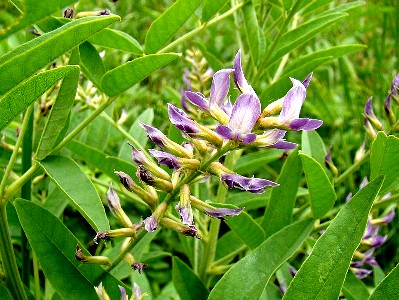
Photo: Yuriy Danilevsky - Licorice (Glycyrrhiza glabra) Plant
Moyle elsewhere recommends when "the Man be laid as for to sweat ...give him only a draught of Dyet-drink"2. He details the ingredients of this diet drink elsewhere in his book. The recipe is: Rx. Liquor. alexipharmicum seu scorbuticum [an anti-poison and anti-scurvy liquid of unknown ingredients], Sarsa[parilla]. Guiac[um]. {of each 8 ounces} Gum[mi]. Guiac. {1 ounce} Succ. Liquoriciæ [Licorice juice - a purging medicine] {4 ounces}, Spir[it]. Vini Rectif[ied]. {8 gallons}, mix, digest twenty days, decant and keep for use."3 In his next book, he alters the recipe for the diet drink a bit. Here, he recommends: "Rx. Lign. Guiac. [guaiacum wood] rasp[ed]. {1/2 pound} Sarsaparilla incisor [cut up] {6 ounces} Rad. China [china root] {3 ounces} Saxifrag[e]. Liquoricia [licorice], ana {of each one ounce} Sem. Feniculæ dulc. [sweet fennel seed] {1 ounce} Passular. [a paste made of raisins - good for cleansing] {8 ounces} misce. [mix] Infus. [pour] hora 24. deinde coquunt [then cook for 24 hours] in aq. font. [spring water] {16 - 8 pounds}, pro Potum ordinario [for a common drink]."4
This prescription contains a wide variety of sudorific medicines and one purging compound. In his first book, Moyle explains, "Let him take two spoonsful of this in small Ale or Beer, every morning and night, and one spoonful in each draught he drinketh at any time"5. As if that weren't enough, he suggests "When you would sweat [your patient], to some of your dyet-drink add a spoonful of Spir. Guiac. and make
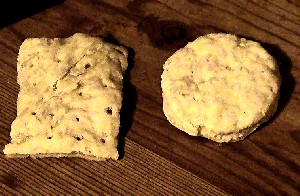
Photo: D. Farr - Hard Tack or Ship's Biscuit (19th c.)
him sweat powerfully, for by this way of purging and sweating we usually Cure the Pox at Sea."6 No kidding! In his second book, Moyle specifies: "Let the Patients drink three pints, or two quarts, of this daily, for thirty dayes together."7 Moyle later adds that "in the time he sweats (which must be an hour at least) you must give him several draughts of his Dyet-drink warm (for now it doth most good)"8.
Moyle also briefly mentions other food the patient may take: "let his Victuals be drying, as Bisket bread [hard tack], and his Mutton or Cabarita [possibly carbonaro - meat broiled on coals], rather roasted than boyled."9 The types of food available on the ship would necessarily be limited which may explain why Moyle is so brief in his recommendations here.
Sea surgeon John Atkins ties sweating more tightly to salivation, recommending it once the salivation procedure has ceased. He mentions a variety of different types of diet drinks, including:
Rx. Baccar. Junip. [juniper berries] {1 dram} Rad. Liquirit. [licorice root] Sem. Fænic. [fennel seed] Ana {of each, one ounce} infunde in [serve it in] Cerevisia tenuis [small beer] cong. [combined] {1 gallon} colaturæ [let it be strained] adde Sp[irit]. Cochlear. [horseradish] {2 ounces} pro usu. [as is customary]
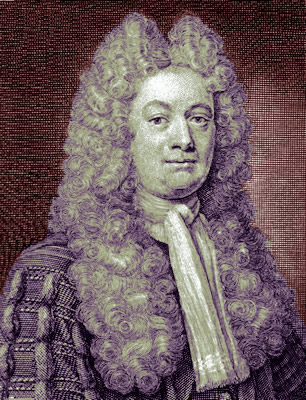
Author Thomas Fuller
Rx. Lign Sassaphras. [sassafras wood] {3 ounces} Sarsæ[parilla] Guaiac[um]. {of each, 2 ounces} Rad. Liquir. [licorice root] Sem. [seeds of] Coriand[er]. Anisi. Ana {of each 1 ounce} CC. Raz. [rasped cornu cervi - harts horn] {1.5 ounces} bulliant. In [boil in] {16 to 12 pounds} Aq[ua]. [water] Colaturæ [strain] bibat sæpe in die. [drink several times a day]
Rx. Thææ sact. ex lign. Sassaphrat. [sassafras tea] Bibat. [drink]
Rx. Cerevisia é Lignis Doctoris Fuller. [This refers to physician Thomas Fuller's 'Cerevisiate Decoction' which contains guaiac wood, licorice, raisins and Japan earth boiled in strong ale and strained with benjamin tincture added.10]
Rx. Decoct. Diæteticum Sydenham pro Potu communi. [for the common drink] - [This most likely refers to Sydenham's 'Dietetick Liquor' which is described as: 'Take of Sarsaparilla six Ounces, of Sassafras, China [root], and shavings of Harts-horn, each two Ounces, of Liquorice one Ounce; boyl them in two Gallons of Fountain-water for half an hour; afterwards let them stand covered upon hot ashes twelve hours, afterwards boył it to the Consumption of a third part; as soon as it is taken from the Fire, infuse half an Ounce of Anniseeds; after two hours strain it, and let it stand till its clear; keep the clear infusion in Glass Bottles well stopt for use.'11]12
Like Moyle's diet drinks, those presented by Atkins contain a wide variety of sudorifics. There were also ingredients for expelling wind (aniseeds and coriander), elements to stop flows (Japan earth & benjamin), purges (licorice), medicines for combating poisons (harts horn) and cleansing ingredients (raisins).
English physician John Sintelaer provides a much more extensive and specific recommendation for the patient's diet while sweating. He begins by quoting physician Joseph Pinkett's recommendations, which Sintelaer generally agrees with:
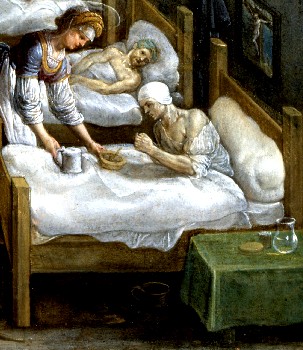
Artist: Adam Elsheimer
Patient Being Served Food and Beverage, From St. Elizabeth
Visits Marburg Hospital, (c. 1598)
In the Morning he must eat nothing at all, at Noon you may give him about four Ounces of Dry-roasted Mutton or Veal, but you must have a care to cut off all the Fat, and three Ounces of hard Bak’d Bread or Biscuit; after Dinner he may eat a few Almonds and Raisins; at Night he must abstain from Meat, but may take for his Supper an Ounce of Biscuit, with some few Almonds and Raisins13
Sintelaer later adds his own recommendations for a sweating diet, which, while it has a lot in common with Pinkett's list, is even more extensively detailed. He says the patient
must be confin'd to about six Ounces of dry’d Bread (hard tack), or the best Biscuit per diem, viz. four Ounces at Noon, and two Ounces for his Supper; at his Dinner he may eat about three Ounces of Mutton or Veal rotten roasted, unless your Patient be very weak, and render'd consumptive [weak and emaciated] by repeated Salivations, or a long Continuance of the Pox, in which Case you may allow him some boil'd Veal, betwixt while, with some cooling and cordial Herbs, such as the Lactuc. [lettuce] Endiv[e]. Flor. Borag. [borage flowers] Buglos[s]. [flowers] &c... After Dinner, as also for his Breakfast, he may eat a few Almonds and Raisins of the Sun, and so he may at Night, with some Bread, but nothing else14
Like Moyle, Sintelaer and Pinkett say that the patient must drink nothing but the diet drink. Theirs contains many elements found in the diet drink recommended by Moyle, although it is again even more complex.
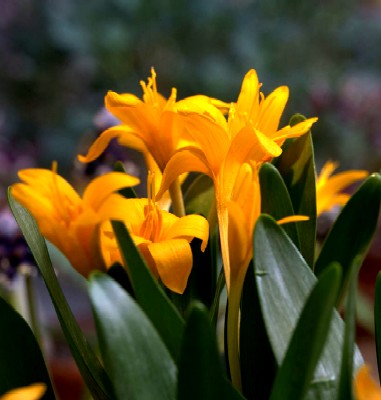
Photo: Gustav Svensson - Hermodactyl (Colchicum luteum)
Take of Sarsaparilla Roots well bruised and cut 4 Ounces; steep them for 24 hours, in 4 or 5 Quarts of fair Water [spring water], and then boil them in a close Vessel with a moderate Fire, to the Consumption of three fourth Parts of the Water; then take the remaining Decoction from the Fire and strain it; after this you must put the Decoction again upon the Fire, in a new Earthen Vessel, and add to it of the best Virgins Hony four Ounces, and of fine Loaf Sugar 1 Ounce; Let this boil together, and take care to take off the Scum as fast as it rises; when you see the Scum quite gone, then take it again from the Fire, and keep it for your use, as you will see anon; then you must prepare the following Powder:
Rec[eipt]. Sarsaparilla, 2 Ounces.
Fol. Senn[a]. 1 Ounce.
Rad. Polypod[ium]. half an Ounce.
Hermodactylor [Hermodactyl Root] 3 Ounces.
Sacchar. alb. [white sugar] half an Ounce.
F. Pulvis. [Make into a powder]Let all these Ingredients be beaten to an almost impalpable Powder, then mix them well together, and keep this Composition for your use as follows: Mix of this Powder two Drachms every Morning early, in four spoonfulls of the before prescribed Mixture15
Sintelaer also mentions using guaiacum here, explaining that the bark and gum from the tree can be "join'd together in the same Decoction, which by Art may be reduced to an Extract, to be used in Form of Pills, by such as are not able to swallow so vast a Quantity of the Decoction"16. Like Moyle's drink, this 'diet' drink is actually a mixture of sudorifics and purges with some sweeteners added for taste.
1 John Moyle, Chirugius Marinus: Or, The Sea Chirurgeon, 1693, p. 145; 2 Moyle, Chirugius Marinus, p. 152; 3 John Moyle, Abstractum Chirurgæ Marinæ, 1686, p. 92; 4 Moyle, Chirugius Marinus, p. 152; 5 Moyle, Abstractum, p. 92; 6 Moyle, Abstractum, p. 93; 7 Moyle, Chirugius Marinus, p. 152; 8 Moyle, Chirugius Marinus, p. 153; 9 Moyle, Chirugius Marinus, p. 152; 10 Thomas Fuller, Pharmacopoeia Extemporanea, 1719, p. 55-6; 11 Thomas Sydenham, The Whole Works of That Excellent Practical Physician, Thomas Sydenham, 1701, p. 370; 12 John Atkins, The Navy Surgeon, 1742, p. 246; 13 John Sintelaer, The Scourge of Venus and Mercury, 1709, p. 241; 14 Sintelaer, p. 242-3; 15 Sintelaer, p. 234-5; 16 Sintelaer, p. 235
Sweating a Confirmed Pox - Using Colocythis
Sea surgeon John Moyle also says that the surgeon can inject clysters (enemas) if the patient's "Body requires [them] at any time"1 both during and after sweating. Unfortunately, he doesn't provide any indication of how the surgeon will know when this is the case. He recommends a prescription of his own for the clyster, pointing (probably erroneously) to Gargarismus ad Relaxio, a gargle

Citrullus Colocynthis, From Medizinal-Pflanzen, By Köhler (1899)
for helping a sore throat. He does this in both the 1693 and 1702 editions of this book.2 Moyle recommends adding a dram of citrullus colocynthis or bitter apple to this, suggesting it improves the medicine. Colocynthis is called 'a rough purger' by apothecary John Quincy, who spends almost two pages discussing ways to attentuate its violence when purging and thus easier to tolerate.3
Moyle expands upon the use of Colocythis, explaining that
the decoction of Colocynthidos (cold Men dispence with its bitterness) is one of the best of Medicines to Cure this, as well as other Cacoethic [malignant] and deplorable diseases by purging. The Receipt is this;
Rx. Pom. Colocynthidos, Cem. Fenicul. [Fennel Seed] Dulc. Anici [sweet aniseed], Daucus, [probably wild carrot seeds] Cumin. ana {of each 3 ounces} Pulegium [pennyroyal], Thymam [thyme], Mother of Thyme [Thymus serpyllum or Breckland thyme], ana {of each, one handful} Flor. Rosmar[y]. Camæm[ile]. ana P. ij {2 handfuls}, Rad. Fenicul. [fennel root] Dulc. Currans [sweet currants], add {of each 1 ounce} Cynam[oni]. {1 ounce} Vin. Hyspan. [wine - Spanish?] {3 pound} Coquunt ad [cook to] {2 pounds} Colat. Denique [strain and then] adde Succius Liquoricia Hispan. {1 ounce} misce. [mix]The dose is three spoonfuls (more or less, according to Age and Strength of the Patient) to be taken in the morning fasting, with observation in other Purges.4
1 John Moyle, Chirugius Marinus: Or, The Sea Chirurgeon, 1693, p. 153; 2 See Moyle, Chirugius Marinus, 1693, p. 153 & Chirugius Marinus, 1702, p. 225; 3 John Quincy, Pharmacopoeia Officinalis & Extemporanea, 1719, p. 186-8; 4 Moyle, Chirugius Marinus, 1693, p. 153-4

